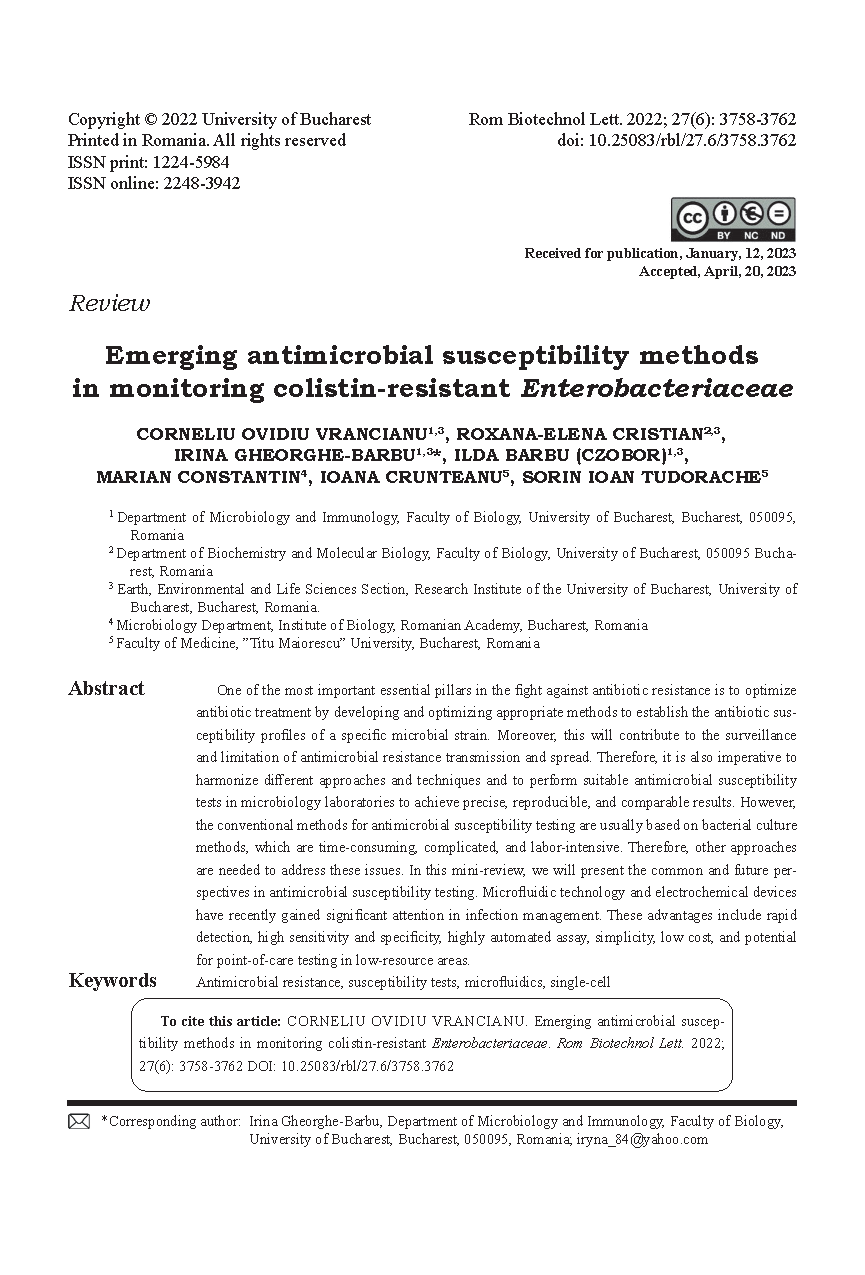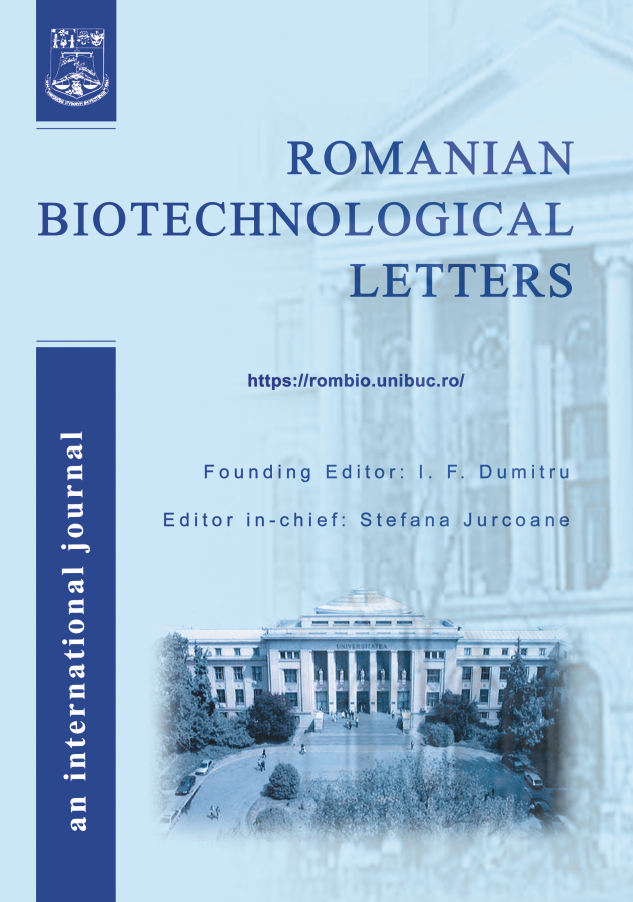Emerging antimicrobial susceptibility methods in monitoring colistin-resistant Enterobacteriaceae
DOI:
https://doi.org/10.25083/rbl/27.6/3758.3762Cuvinte cheie:
antimicrobial resistance, susceptibility tests, microfluidics, single-cellRezumat
One of the most important essential pillars in the fight against antibiotic resistance is to optimise antibiotic treatment by developing and optimizing appropriate methods to establish the antibiotic susceptibility profiles of a specific microbial strain. Moreover, this will contribute to the surveillance and limitation of antimicrobial resistance transmission and spread. Therefore, it is also imperative to harmonize different approaches and techniques and to perform suitable antimicrobial susceptibility tests in microbiology laboratories to achieve precise, reproducible, and comparable results. However, the conventional methods for antimicrobial susceptibility testing are usually based on bacterial culture methods, which are time-consuming, complicated, and labor-intensive. Therefore, other approaches are needed to address these issues. In this mini-review, we will present the common and future perspectives in antimicrobial susceptibility testing. Microfluidic technology and electrochemical devices have recently gained significant attention in infection management. These advantages include rapid detection, high sensitivity and specificity, highly automated assay, simplicity, low cost, and potential for point-of-care testing in low-resource areas.




